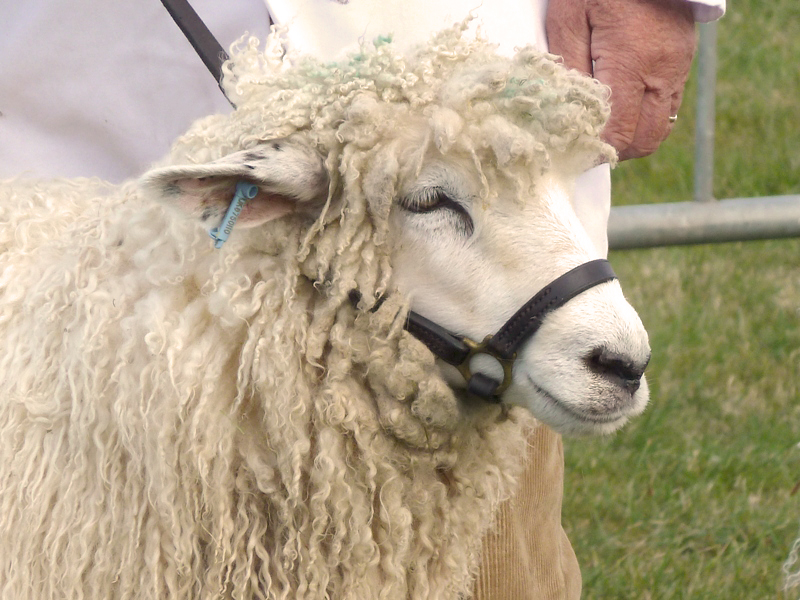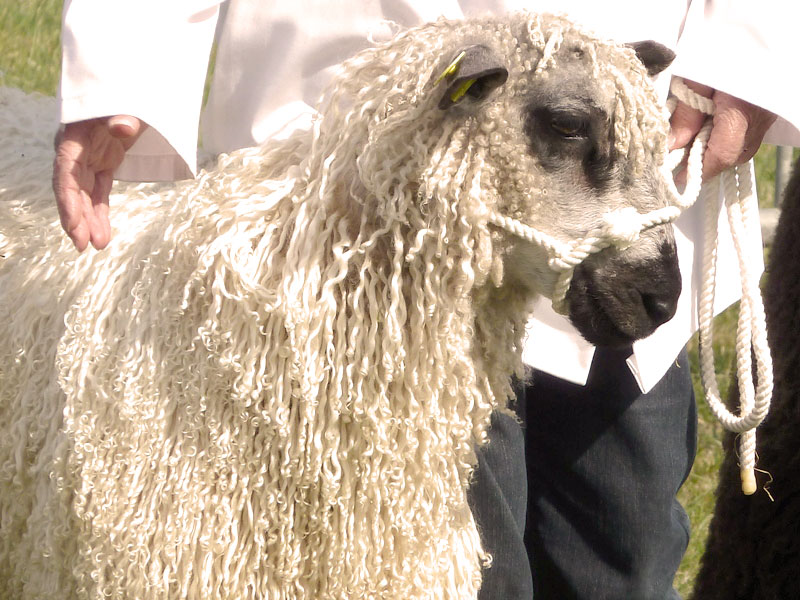Our Flock
The Cotswold Breed
The Cotswold is a large, hornless, longwool breed with a white face, a well-developed forelock and a high lustre wool. They are one of the largest British sheep breeds with an average ram weighing 140 kg and a ewe 85 kg ; the fleece of a shearling could weigh over 10 kg

The sheep are descended from flocks that grazed the Cotswold Hills and during the Middle Ages they provided the wool, which was a major export commodity, to countries like Flanders and Italy. The abbeys of Gloucester and Winchcombe had flocks of 10,000 and 8,000 respectively. The "wool" churches and buildings constructed by wealthy wool merchants in the Cotswolds remain a lasting testimony of the breed's Mediaeval importance.
In the 19th century the breed achieved a second golden age, but this time as a meat producer and Cotswold sheep were exported all over the world. However, by the 20th century changes in demand for meat and wool contributed to a decline in the breed, so much so that by the 1960s there were only about 200 breeding ewes. Nowadays, the breed has been saved from the brink of extinction by a number of people determined to save this historically important sheep. At present there are about 1,200 breeding ewes.
*****
The Teeswater Breed
The Teeswaters originate from the north east of England inthe area of the River Tees. In this area the Teeswaters were usedfor crossing purposes on to the smaller hill sheep to produce a cross bredsheep suitable for fat lamb production on the more fertile land furtherdown the dale.

There are records of Teeswaters being exported to Tasmania in the early 1800's. Also around this time Robert Bakewell started a breeding programme to develop and enhance the quality of the local sheep, which were Leicester Longwools. In the 1840's some Teeswater females were crossed with a Dishley Leicester Longwool ram called Bluecap, and the offspring were the origins of the Wensleydale breed. As it had a bigger and better body shape, it would appear that eventually the Wensleydale breed became more popular and the Teeswater declined until by the 1920's the breed was nearly extinct.
Despite being challenged by continental rams (Rouge, Bleu de Maine, Texel and Charolais) during the late 1980's, the Teeswater is still the number one sire used on many horned ewes, for example, Dalesbred, Swaledales, Rough Fells, Scottish Blackface, Exmoor Horn, Beulah and Exmoor Horn. These crosses, commonly known as Mashams, carry the best characteristics of the Teeswater producing a ewe with a long, well shaped carcase, high prolificacy, with great milking and mothering abilities. They are regarded as a Rare Breed and at present there are about 800 breeding ewes.
The fleece is a fine lustre weighing around 6 kgs with a staple length of approximately 30 cms and is much sought after by spinners. Interestingly, whilst the Cotswolds, Lincoln, Leicester and Devon Longwools all still have white faces, the Teeswater has been developed, since 1950, with chocolate markings on its face and legs.
*****
